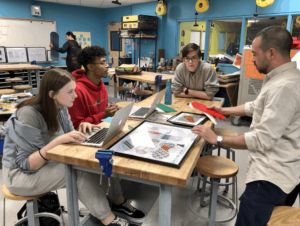The School Choice Debate in India
HYDERABAD. After three weeks with Gray Matters Capital, I realized that I landed in India at a very dynamic time of education reform—a very different version than is occurring in the US—perhaps not really reform, but a rapid evolution of a multi-provider system of education with 500 million eager customers.
The soup of conversation surrounding government schools and private schools is as rich as masala. Vinod Raina asks “Nowhere in the world has universal elementary education been achieved through private schools — how can India be an exception?”
Within the last few years there has been a rise of what is called Affordable Private schools, which can range from Rs 100- 600 or $2-13 a month (what is considered affordable is a debate within itself). According to Credit Suisse, something like 950,000 of the schools in India are funded and ran by the government, while the other 75,000 are aided private schools recognized and unrecognized private schools. There are 90 million students in the 75,000 private schools and 129 million in public schools.
Government ran schools, what we call public schools in the US, are extremely dysfunctional. In many areas, parents only send their kids to government schools if they absolutely cannot afford a low cost private school. One of the unfortunate factors is that the teachers are actually qualified (attended University and training) but are not accountable, they are paid big salaries and can come to school not teach because they have job security for life.
The government just passed the Right to Education Act and believes that all children ages 6-14 deserve an education (the quality of education is not mentioned). The issue is that they are attempting to make education mostly government ran or at least strictly enforced. Three years after the act has passed, private schools will be forced to admit 25 percent of students from within their neighborhoods and the government will reimburse them for the amount of the kids. Advocates of the government ran schools would say that this is their promotion of common school integration. The government is very bureaucratic and not efficient enough to pass funds on in a timely matter to their own schools, let alone to a school with low importance to them.
My views of the public-private debate have been influenced by my own education. I attended public schools K-12 and attended a private university. My education in the US gives me some hope for public education and what it offers many socio-economic groups but also value what a small private institution can offer. I am not nearly as hopeful about government run education in India.
At one government school in Delhi, the headmistress was enthusiastic, but had to battle the bureaucracy of the government daily: a 20% shortage of teachers, chronic absenteeism of the teachers she had, a locked library because the government has not replaced the librarian, a deteriorating infrastructure, and the classrooms look like jails. Teachers in government institutions have obligations within the government and community. They will leave for a period of time to fulfill these duties rather then actually be present in the classroom.
Much of my time in Hyderabad has been spent in the APS. Although the facilities are much smaller then government ran school properties and do not leave me necessarily optimistic, there is much more to be excited about. These schools are willing to be rated by Gray Matters Capital and M-CRIL. In return, they can access services like management training, capacity building, teacher training, curriculum building, English training, or finance training by companies like the Indian School Finance Company. The teachers are actually present in the classroom, the kids are learning multiple languages, and interacting with one another rather then only reading and copying from a textbook.
Regarding both government run schools, Parth Shah, President of the Centre of Civil Society puts it best, “Fund students, not schools!” Families should have the choice of schools for their children. Dr. Shah asks the question, “Does the ownership of the school relate to the quality?” CCS would like to create a scholarship system, so that instead of the 25 percent of government sponsored kids attend the private schools, 75 percent of the other poor students would have similar choices. The CCS would call this the Right to Education of Choice, and would be a way to create quality education for all.
If the government were truly concerned about providing quality education for everyone from ages 6-14, then they would work to provide that regardless of who owned the schools. Also, if they were to look at the long-term social impact for their country, they would see that friendly competition between government schools and private schools would only improve the education and the strength of the future generations.
Katherine Vander Ark








0 Comments
Leave a Comment
Your email address will not be published. All fields are required.